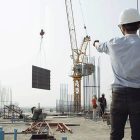Construction design services play a pivotal role in shaping the success of any building project. Whether it’s a residential home, a commercial building, or a large-scale infrastructure project, the design process ensures that every detail aligns with the project’s goals. These services focus on creating plans, blueprints, and detailed specifications that guide the construction team and ensure that the final product meets the client’s needs, safety regulations, and budget constraints.
What Are Construction Design Services?
Construction design services encompass all the stages involved in creating a structure, from the initial concept to the final blueprint. The primary goal of these services is to transform a client’s vision into a workable design that meets both aesthetic desires and functional requirements. These services include architectural design, structural planning, engineering solutions, and the creation of technical documentation for builders and contractors.
At the heart of the design process is collaboration between architects, engineers, and the client. Architects focus on the aesthetics and spatial arrangement, while engineers ensure that the structure is safe, sustainable, and efficient. This collaboration leads to designs that are not only visually appealing but also practical, durable, and built to last.
Types of Construction Design Services
1. Architectural Design
Architectural design is the most recognizable form of design service. It focuses on the overall appearance, layout, and functionality of the building. Architects work with clients to understand their needs and then create blueprints and models that reflect those ideas. The design includes everything from the exterior facade to interior spaces, ensuring that every area serves its purpose efficiently.
2. Structural Design
Structural engineers play a crucial role in the construction design process. They ensure that the building can withstand the forces of nature, such as wind, earthquakes, and heavy loads. Structural design services involve calculating the materials needed, the load-bearing capacity of the structure, and designing systems that ensure the building’s stability over time.
3. Mechanical, Electrical, and Plumbing (MEP) Design
Construction design services also include MEP services, which cover the design of heating, ventilation, air conditioning (HVAC) systems, electrical wiring, and plumbing. These systems are essential for the operation of any building. Proper design ensures energy efficiency, safety, and long-term functionality.
4. Sustainable Design
In today’s world, sustainability is a growing concern. Sustainable design services focus on creating energy-efficient, environmentally friendly buildings. From using green materials to implementing energy-saving technologies, sustainable design ensures that buildings have minimal environmental impact while maximizing efficiency.
The Importance of Technology in Construction Design
In the past decade, technology has transformed the way construction designs are developed. Building Information Modeling (BIM) is one such innovation. BIM allows for 3D digital models of a building, providing a visual representation that helps architects, engineers, and contractors collaborate more effectively. It also improves accuracy by detecting design flaws early in the process, reducing costly changes during construction.
Conclusion
Construction design services are the backbone of any building project. They ensure that structures are not only visually appealing but also safe, functional, and efficient. From architectural design to structural engineering and MEP systems, these services integrate expertise in various fields to bring a client’s vision to life. As technology advances, these services are becoming more efficient, accurate, and environmentally conscious, ensuring that construction projects meet modern demands for sustainability, safety, and innovation. For anyone embarking on a building project, partnering with a skilled team of design professionals is essential for ensuring success.





